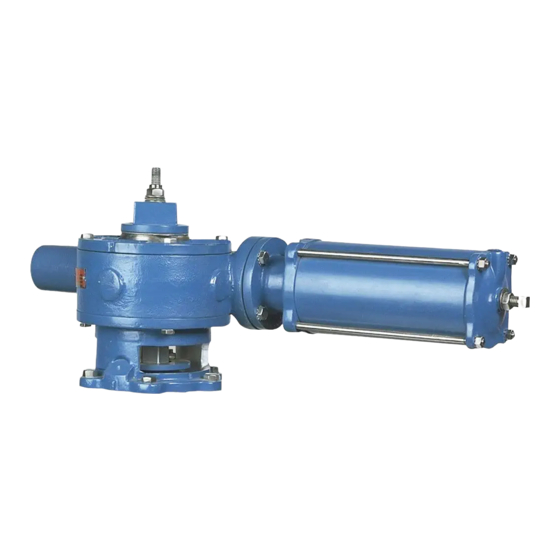Stop Adjustments
The two stops are spacers and screws located in the actuator cover. When the pointer contacts one of
the stops, the valve quits traveling in that direction. The two stop adjustments are directly related;
changing one stop will change the other stop the same amount. To adjust the stops, follow these steps.
1. Turn the operator on the top of the actuator counterclockwise one revolution. This lifts the plug
off the seat.
2. Loosen -DO NOT REMOVE - the four screws holding the cover dial in place.
3. Turn the operator on the side of the actuator until the pointer pushes against the stop, then
continue turning the operator until the desired stop position is obtained. The pointer should be
either perpendicular or parallel with the pipeline.
Note: If the operator does not turn easily when pushing on the stop, the cover has rusted to the
housing. Use a hammer and chisel to move the cover until the desired stop setting is obtained.
4. Tighten the four screws loosened in Step 2.
5. Check the stop settings by turning the operator on the side of the actuator until the pointer
contacts each stop; ensure the valve plug position is correct at both stop settings.
6. Turn the operator on the top of the actuator clockwise one revolution. This reseats the plug in
the seat.
Actuator Removal
When a tapered plug valve is mounted in a vertical pipeline—or mounted in a horizontal
pipeline with the plug stem horizontal—gravity can cause the plug to swing to a lower
position in the valve body when the actuator is removed. Place the plug in the lowest
position before removing the actuator.
1. Discontinue system flow and relieve pipeline pressure.
2. Scribe a line on the valve bonnet and actuator adaptor to use for alignment during actuator
installation.
3. Turn the operator on top of the actuator fully clockwise.
4. Loosen the set screw in the nut on the top of the actuator.
5. Remove the nut, then slide the operator off the sleeve. Do not lose the key.
6. Note the position of the pointer, then remove the screws fastening the pointer in place and lift
the pointer off the actuator.
7. Unscrew the sleeve from the plug stud; this is a left hand thread.
8. Lift the flat bearing washer from actuator.
9. Note the stampings on the top of the valve plug stem. These stampings correspond with the
plug face as shown in Figure 1. It is important that the plug position be noted to ensure it is in
the correct position during ACTUATOR INSTALLATION.
May 2020
LIFT, TURN AND RESEAT G-SERIES ACTUATORS USE ON
Page 5
PTW & PFW TAPERED PLUG VALVES
DeZURIK
D10189

